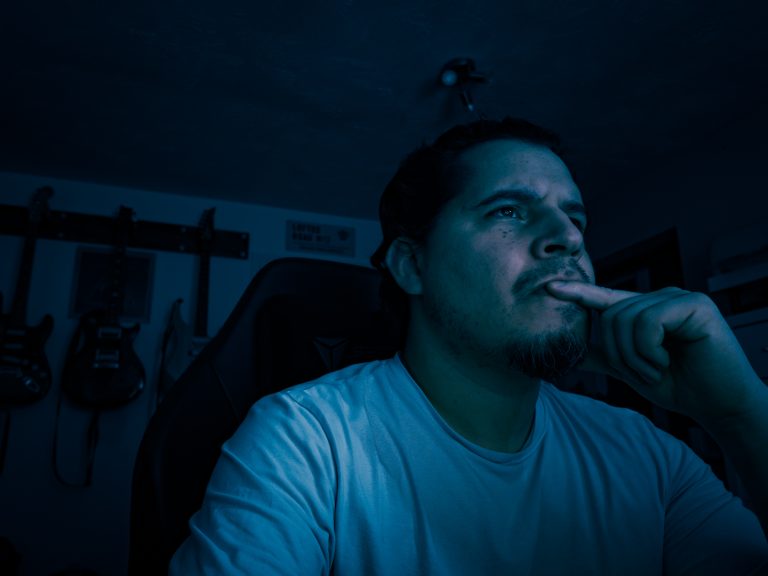It’s easy to mistake discipline for virtue. We talk about focus as if it were a moral muscle — something you strengthen through sheer willpower, a private gym where attention is either trained or lost. But focus isn’t forged in isolation; it’s negotiated through noise. Every tool, every feed, every system that promises connection also competes for control of it.
The modern mind isn’t short on motivation — it’s short on margin. Each day becomes a delicate calibration between curiosity and control, inspiration and intrusion. And yet, when that balance tips, we rarely question the system that pushed it. We question ourselves.
Compassion, in this context, isn’t indulgence. It’s engineering — the deliberate design of conditions that allow attention to recover, recalibrate, and return. Not as a performance, but as an act of self-respect.
Scenario: The 10-Minute Scroll That Stole an Hour
It starts innocently: a quick check of a message to clarify what you’re working on. The phone sits just within reach, face down, an obedient tool until the red notification badge catches your eye. You hesitate, already aware of what comes next, but curiosity feels harmless when dressed as context.
One swipe becomes a scroll. Ten minutes becomes twenty. The loop tightens — updates, reactions, highlights, an algorithmic whisper reminding you there’s always something else to see. Somewhere between the third reel and the seventh half-formed thought about “getting back to it,” the moment of agency evaporates.
You catch yourself. A quiet sigh, a lock screen, a return to discipline. Laptop woken, cursor blinking, momentum half-remembered. Only then does the original intention resurface — “oh right, the message.” 🤦🏽♂️
The cycle completes with surgical precision. Not a failure of will, but a system executing its design.
What looks like a lapse in discipline is, in truth, a dialogue between two systems — one human, one designed. The mind searches for meaning; the machine searches for engagement. Between them sits the myth of control: the idea that awareness alone should be enough to resist architecture built for compulsion.
It isn’t.
That moment between “I know what I’m doing” and “I’m doing it anyway” isn’t weakness — it’s the fracture line where design meets desire. And it’s there, in that sliver of contradiction, that the work of engineering compassion begins.
The Choreography of Control
Every focus ritual begins as an act of optimism.
Timers, blockers, grayscale screens — all small gestures of defiance against the frictionless design of distraction. Yet the moment those systems meet the open world of devices and feeds, the choreography collapses. Each notification becomes a nudge, each “quick check” a breach in the perimeter. The problem isn’t that our defences are weak; it’s that the environment keeps rewriting the rules of engagement.
Behavioural design was never inherently malicious. At its best, it helps people form useful habits: saving money, exercising, learning languages. But when the same mechanics are turned toward metrics of retention and revenue, intention turns inside out. The Hook Model (trigger → action → variable reward → investment) becomes a silent metronome keeping time to someone else’s rhythm. We internalise it so deeply that the interruption begins to feel self-authored.
The result is a kind of algorithmic ventriloquism. You think you’re acting on a decision, but the decision has already been framed for you: the red dot, the infinite scroll, the perfectly-timed “you might also like.” Each feature is a micro-contract trading agency for convenience.
Focus, then, isn’t a contest of willpower. It’s a negotiation between two choreographers — one designing for purpose, the other for profit. And until we recognise that dynamic, every attempt at control will look like clumsiness on a stage built to trip us.
The Myth of Missing Out
If technology choreographs distraction, identity provides the soundtrack.
The feed isn’t just a stream of information; it’s a pulse of belonging. Each refresh promises proximity — to news, to peers, to relevance itself. The irony is that the more we chase connection, the less connected we feel. FOMO is no longer about missing an event; it’s about missing the sense of being part of it all.
We tell ourselves the stories that make scrolling permissible:
- I might see something useful for work.
- I should stay across the news.
- I’ve earned a break.
The logic feels sound because it mimics care — a justification dressed as curiosity. What it really protects is identity: the digital self that stays visible by staying active.
In quieter moments, nature exposes the fraud. Attention Restoration Theory describes the replenishing quality of “soft fascination” — the kind of attention that drifts gently without demand. Contrast that with the “hard fascination” of the feed, which captures us completely but restores nothing. The first expands capacity; the second consumes it.
To feel informed, we surrender focus. To stay included, we scatter attention. It’s a paradox that punishes those most willing to engage. And when fatigue arrives — the fog of too much input, too little meaning — it’s mistaken for moral failure rather than the predictable outcome of overstimulation.
The truth is simpler, and harder to swallow: we’ve confused being aware with being alive.
Engineering Compassion
Every relapse comes with a story.
You catch yourself scrolling again and think, “I should know better by now”. The phrase sounds like discipline, but it’s really defeat disguised as insight. Shame is the most efficient energy sink of them all — it burns hot and leaves nothing useful behind.
The truth is, coping systems are not crutches; they’re craftsmanship. Each boundary, each timer, each deliberate friction point is a design decision — a way of protecting function from fatigue. Resilience isn’t stoicism; it’s the capacity to recover without resentment. The moment we reframe those systems as tools rather than tests, discipline turns into design.
The so-called “dopamine detox” movement misunderstands this entirely. You can’t detox from being human. Dopamine isn’t a toxin; it’s a messenger — a signal for salience, motivation, and reward. The goal isn’t abstinence; it’s calibration. When every micro-reward is on tap, motivation becomes noise. But by reintroducing rhythm — variation, rest, reflection — we give our minds a chance to tune back to signal.
Engineering compassion means designing for failure as part of the system. It’s accepting that lapses aren’t evidence of weakness but proof of contact with a difficult world. The point is not to eliminate distraction, but to make returning easier — to replace guilt with recovery, and perfection with maintenance.
Focus, after all, isn’t the absence of noise. It’s the art of knowing which signals deserve to stay.
Conclusion
We spend so much energy trying to fix the symptom that we forget to question the setup. The problem isn’t that we lose focus; it’s that we live in a system designed to keep us from finding it. And yet, waiting for that system to change is a luxury few of us can afford. The only architecture within reach is the one we build for ourselves — routines that respect fragility, and boundaries that honour bandwidth.
Compassion becomes the blueprint. It’s the quiet refusal to measure progress by how little you slip and instead by how gracefully you return. The tools we build for focus — blockers, rituals, resets — are not declarations of weakness; they’re expressions of design literacy. We understand the forces acting on us, so we build counterweights that make sense for who we are.
Because attention was never meant to be a test of willpower. It was meant to be a conversation — between curiosity and care, signal and silence, ambition and rest. The work isn’t to mute the noise, but to keep listening for yourself through it.
Relational Observations
Designing for the Fall
-
Distraction isn’t defiance.
It’s evidence of a system optimised for interruption, not intention. -
Technology choreographs behaviour.
But we still get to choose the rhythm that feels human. -
Belonging is the real hook.
Platforms sell community while quietly commodifying our attention. -
Shame drains more focus than screens.
Compassion is the only sustainable form of discipline. -
Systems aren’t crutches.
They’re the scaffolds that make resilience repeatable. -
Attention is not a moral metric.
It’s a relationship we learn to rebuild — one decision at a time.




